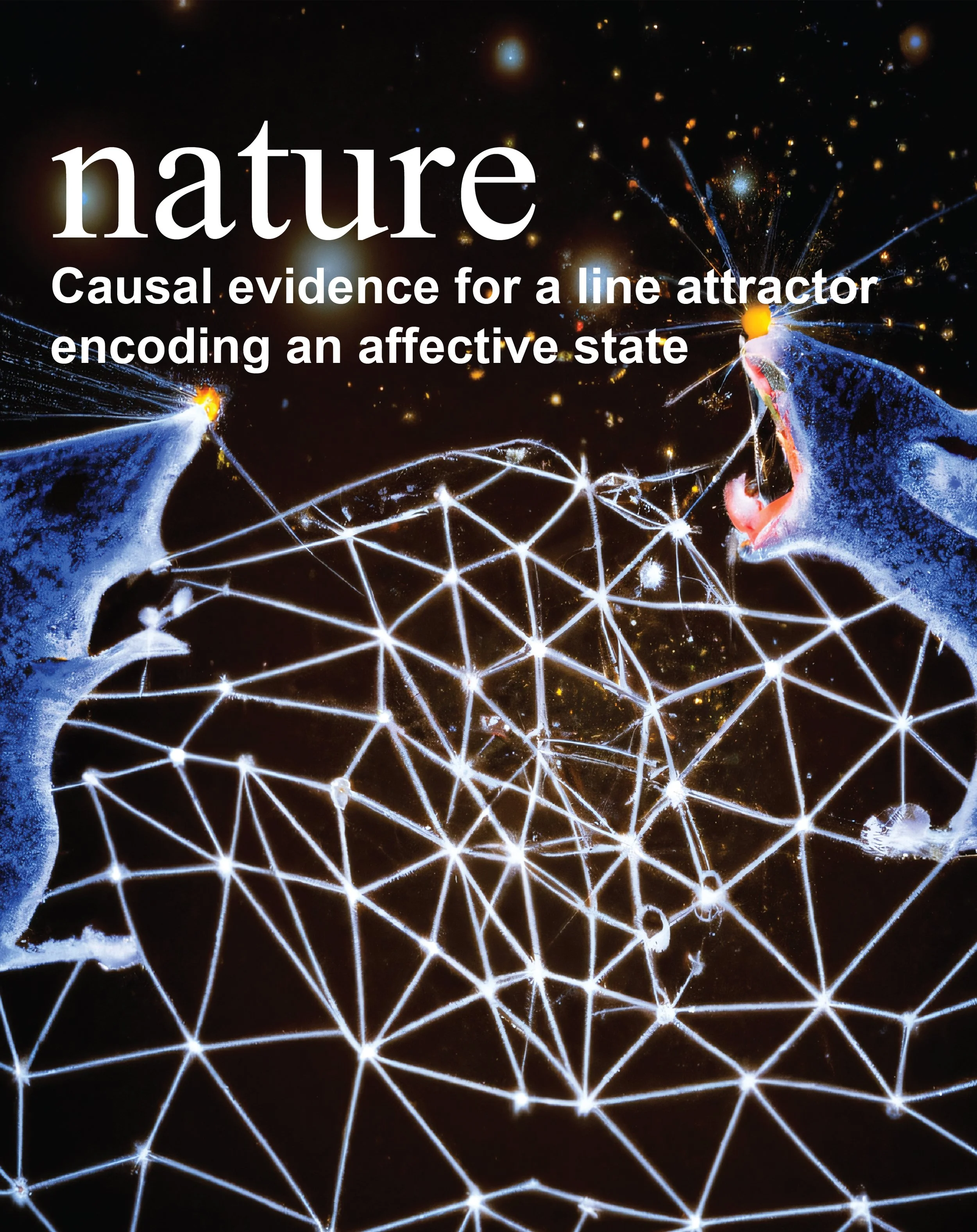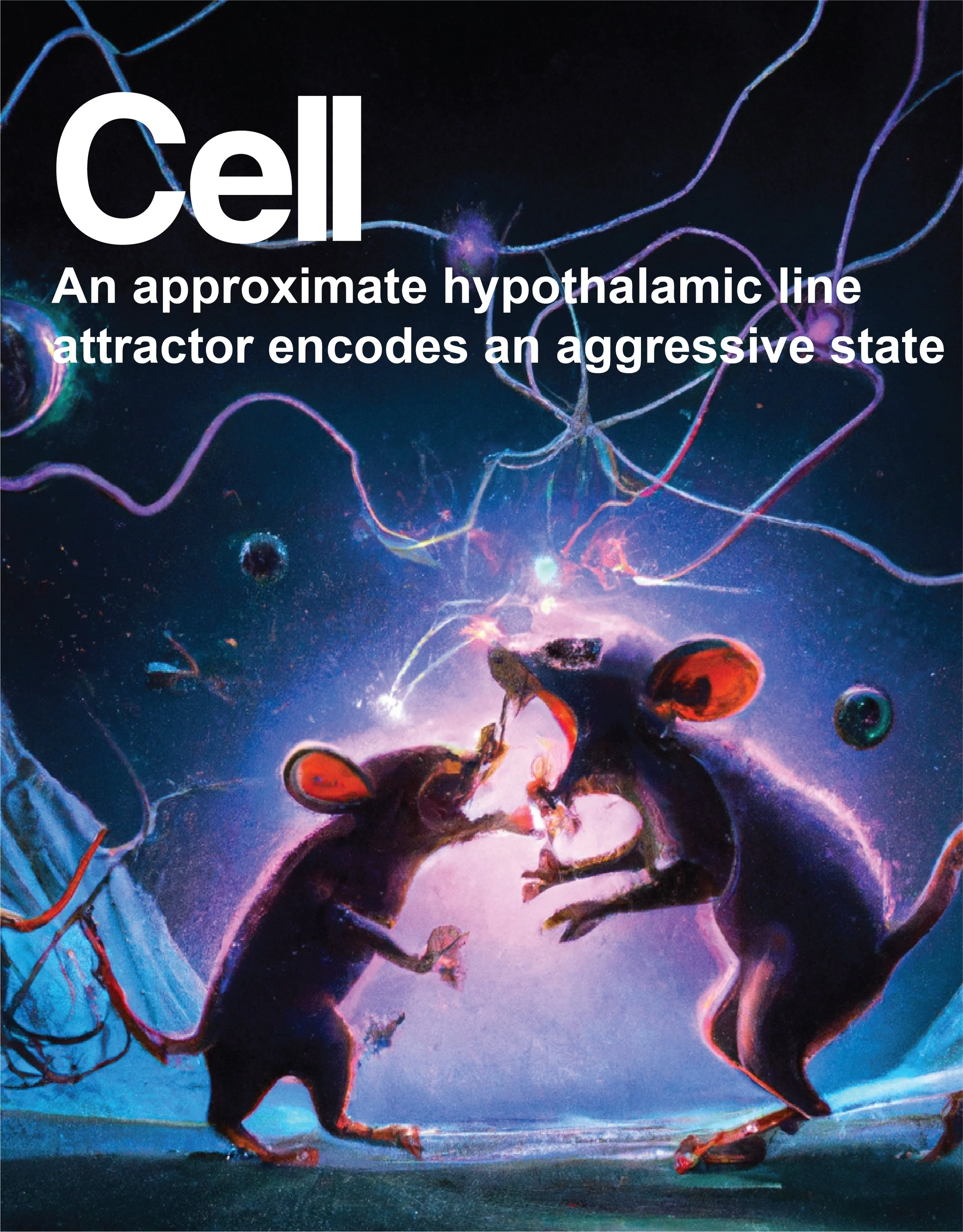select publications
a defining theme in my research is how experimental neuroscience tools, when combined with machine learning, can unlock new insights in biology. below is a series of papers I published during my graduate and postdoctoral career that illustrate this theme, showing how the language of dynamical systems can bring new light to the study of affect and emotion.
current research in the lab extends this framework while also taking it in new NeuroAI-inspired directions, with applications in both basic science and translational research.
-

Nair et al., Science 2025
This essay provides a broad overview of my work on how data-driven AI methods are uncovering signals that underlie diverse emotional states.
-

Vinograd*, Nair* et al., Nature 2024
Causal evidence for a line attractor encoding an affective state
In this paper, we used two-photon holographic optogenetics combined with closed-loop machine learning methods to test key properties of continuous attractor dynamics and provide evidence for an intrinsic line attractor in the hypothalamus.
-

Liu*, Nair* et al., Nature 2024
Encoding of female mating dynamics by a hypothalamic line attractor
In this paper, we show that line attractors are used to encode diverse affective states, including states of sexual arousal. We find that these attractors undergo drastic modification across the estrus cycle, offering clues about their mechanistic underpinnings.
-

Mountoufaris, Nair et al., Cell 2024
A line attractor encoding a persistent internal state requires neuropeptide signaling
Using new CRISPR-based tools, we show in this paper that neuropeptide release is crucial for instantiating robust attractor dynamics in innate neural circuits.
-

Nair et al., Cell 2023
An approximate line attractor in the hypothalamus encodes an aggressive state
This paper introduced the framework of dynamical systems into the study of affect. It showed how data-driven methods that approximate neural activity as dynamical systems can uncover hypotheses for how affect is encoded in an unsupervised manner.
-

Nair et al., PNAS 2023
A functional logic for neurotransmitter co-release in the cholinergic forebrain pathway
In this paper, we combine ex vivo electrophysiology with network modeling to address the paradox of how neuromodulatory systems can release opposing transmitters while still encoding information.
